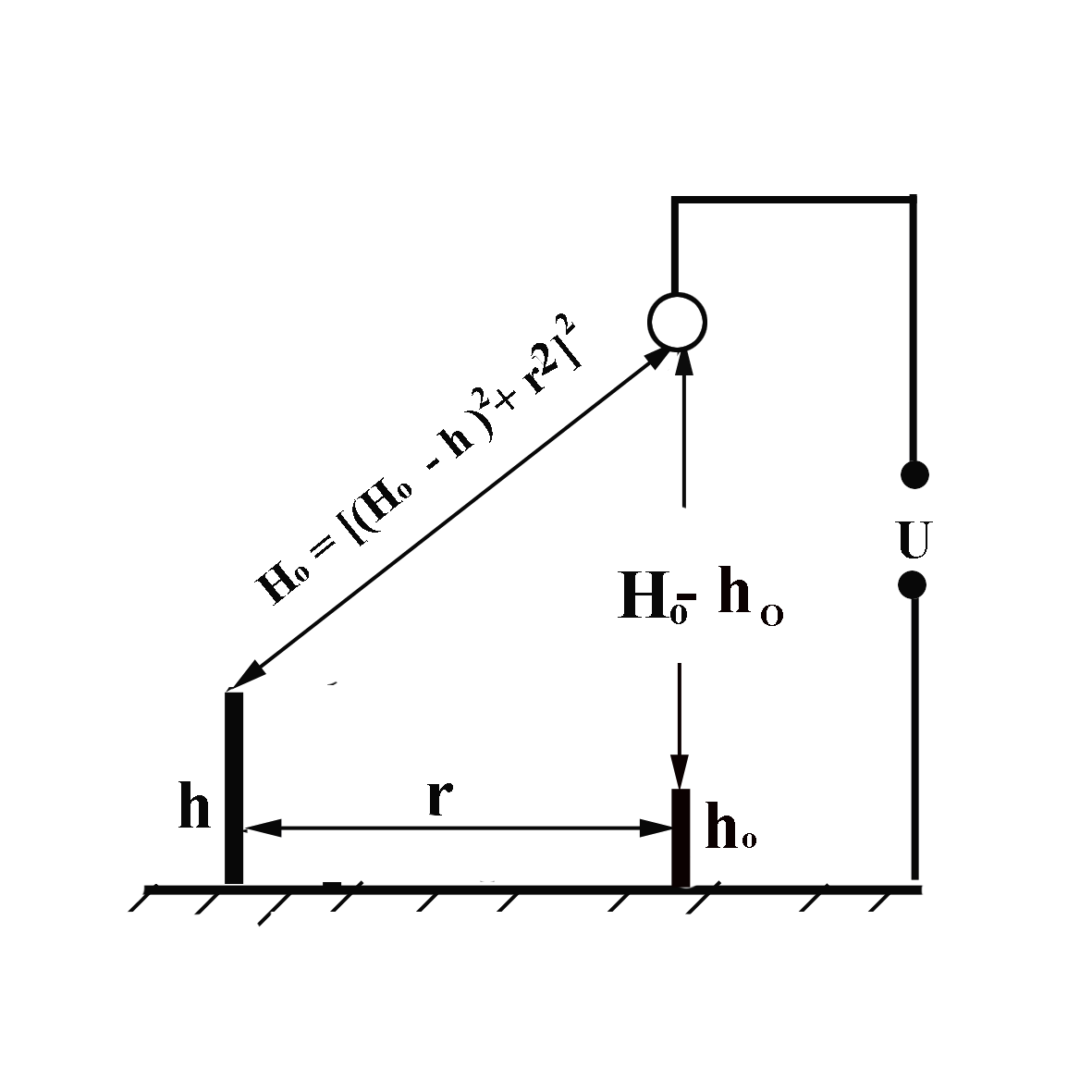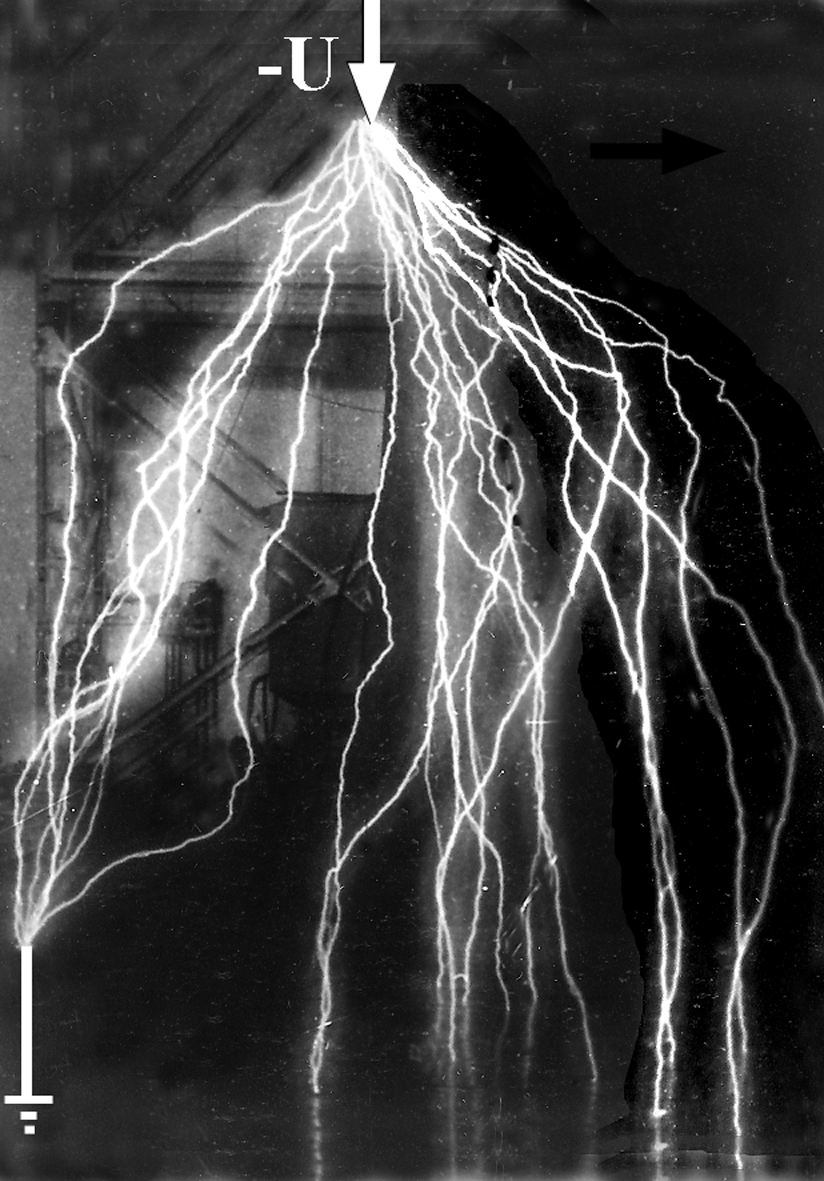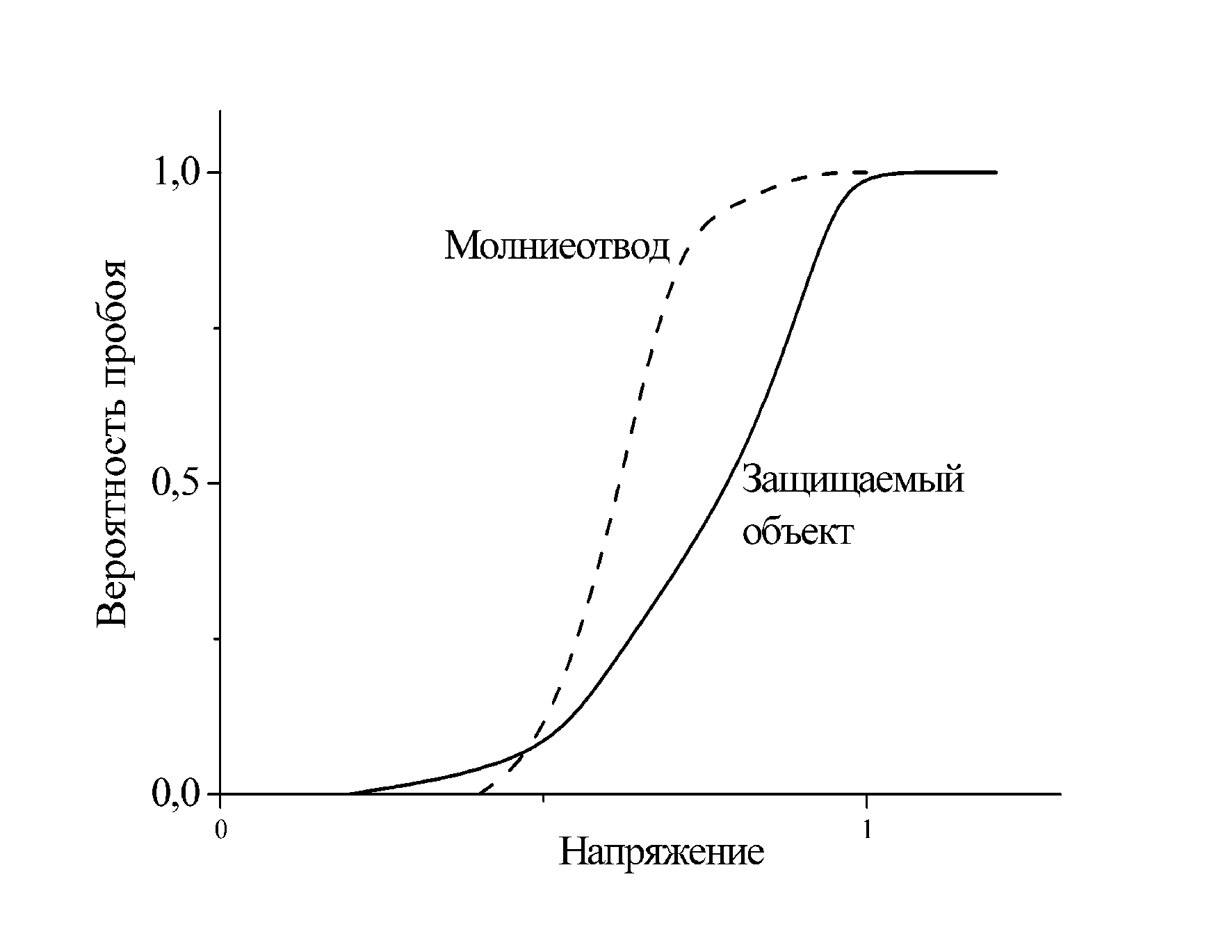The answer to this question could be given even at the times of Franklin and Lomonosov. The experiments showed that lightning is a giant long spark. Its analog could be received at the laboratory even in XVIII century with the help of an already existing induction machine. The best of them gave voltage of hundreds kilovolts - quite enough for the formation of sparkles dozens of centimeters long. Such a physical model can give base for a high-quality analysis.

Fig. 1
Take a look at the layout of grounded electrodes in fig. 1. The distance to the central grounded electrode there (object model) is equal to the distance to the second one (lightning rod model), shift from it to the distance r. High-voltage electrode is connected to the source of high voltage and models the forming lightning. You can switch on high voltage and see the sparkle flight. It is necessary to repeat the experiment many times in order to collect convincing statistics. Its result is obvious- 50 % of discharges get into each rod. Now let's increase the height of the rod modelling the lightning rod. Its discharge interval will become shorter and therefore, easily spanned up by electric discharge. However, don't hope that it will collect all the discharges. The share of discharges into the lightning rod simulator will increase of course, but the probability won't be 100%. Part of spark channels will choose the longer way to the object.

Fig. 2
Increasing the height of the lightning rod and correspondingly reducing the distance from it to the head of the lightning channel, we can increase the share of strikes accepted by the rod, but an insignificant probability of a lightning breakthrough to the object remains. That is why, the efficiency of lightning rod protection is essentially less than 1, and with equal heights of the object and lightning rod it can't be more than 0,5.

Fig. 3
| вероятность пробоя | breakthrough probability |
| молниеотвод | lightning rod |
| защищаемый объект | protected object |
| напряжение | voltage |
So in the result of a qualitative analysis, two important peculiarities of rod lightning rod protection zones are revealed. First of all, the top of the zone can't coincide with the top of the lightning rod. Even at the protection reliability more than 0,5 the lightning rod should exceed the protected object.
Secondly, with the increase of the horizontal distance between the lightning rod and the object, the ultimate height of the object must be reduced in order to save the distance
 ,
,
and the reliability of object protection from direct lightning strikes. That's why, there is an idea of a protection zone as of a cone surface, the top of which is located on the axis of the lightning rod below its top and its radius increases as ground nears.
There are contradictions in relation of the second provision, but the top of the protection zone is often united with the top of the lightning rod. For example, it was done in EIC 62305 without any justification, though the inaccuracy of such a provision doesn't cause any doubt on the base of ideas given above. And the error becomes more significant when heights of lightning rod and protected object become closer.
Why protection zones has a circular cross-section
Electric field of the vertical rod has axis symmetry. It is clear that all its impacts should manifest to the same extent in azimuth, regardless of the turning angle relative the vertical axis.
The circular cone is really appreciated by designers, because such a figure can be built using two parameters - top height and base radius. The question is only in their justified estimation.
Do you have any questions on calculation of lightning protection or grounding? Please contact our ZANDZ Technical center!
See also:
Related Articles:

